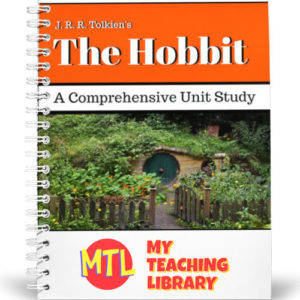Only logged in customers who have purchased this product may leave a review.
Products
- Home
- /
- Shop
- /
- By Grade
- /
- 6th-8th
- /
- Science
- /
- Branch of Science
- /
- Life Science
- /
- Anatomy | Parts of the Ear
Anatomy | Parts of the Ear
$1.50
Studying the human ear? This resource includes…
- – Poster with the following parts labeled (auricle, auditory ossicles, semicircular canals, vestibule nerve, facial nerve, cochlear nerve cochlea, vestibule, eardrum, Eustachian tube, external auditory meatus)
- – Student worksheet to label
Related products
-
 $2.00Buy Now
$2.00Buy NowThis resource contains a variety of literary works from authors such as Walt Whitman, George Cabot Lodge, and Edith M. Thomas.
-
 $12.00Buy Now
$12.00Buy NowThis novel study is everything you’ll need to teach the British Literature classic, The Hobbit, broken down into 5 ‘easy to manage’ sections!
This study provides…
- * Summaries and Analysis of each chapter in the book
- * Details on Themes, Symbols and Characters
- * Assignments
- * Discussion Questions
- * Vocabulary Work
- * Classroom Activities (including ideas for differentiated instruction)
- * Essay Ideas
- * Quizzes
- * Puzzles
- * Final Exams
- * Answer Keys
-
 $3.25Buy Now
$3.25Buy NowThis book unit (Holes by Lousi Sachar) provides reading comprehension questions, vocabulary work and discussion questions in which students will be tasked with writing their answers.
There are 22 pages and split into groups of chapters for ease of assignment/use:
- Chapters 1-5
- Chapters 6-10
- Chapters 11-16
- Chapters 17-22
- Chapters 23-28
- Chapters 29-33
- Chapters 34-39
- Chapters 40-45
- Chapters 46-50
Also included: Extended activity ideas and answer keys
About the book:
Holes is a 1998 novel written by Louis Sachar. It won the 1998 U.S. National Book Award for Young People’s Literature and the 1999 Newbery Medal for the year’s “most distinguished contribution to American literature for children”. The story centers on an unlucky teenage boy named Stanley Yelnats, who is sent to Camp Green Lake, a juvenile corrections facility in a desert in Texas, after being falsely accused of theft. The plot explores the history of the area and how the actions of several characters in the past have affected Stanley’s life in the present. These interconnecting stories touch on themes such as racism, homelessness, illiteracy, and arranged marriage.Interest level:
Grades 4 – 8Reading level:
Grades 3 – 8 -
 $4.00Buy Now
$4.00Buy NowAn engaging writing center resource that students will love to use! Materials include:
- Center Title & Instruction ideas
– Check your 6 + 1 traits
– Instructions
– Perspective questions - 86 writing prompt cards (best suited for 3rd-6th grades)
- Center Title & Instruction ideas




Reviews
There are no reviews yet.